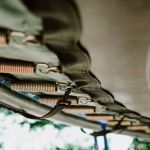- 1-Role-of-Trampolines-in-Physical-Therapy
- 2-Benefits-of-Trampoline-Therapy
- 3-Types-of-Physical-Therapy-Trampoline-Exercises
- 4-Safety-and-Considerations-for-Using-Trampolines
- 5-Finding-Quality-Trampolines-for-Therapy
1. Role of Trampolines in Physical Therapy
Using trampolines in physical therapy has gained popularity as an effective tool to improve balance, coordination, and muscular strength. The dynamic surface of a trampoline challenges the body’s stability, encouraging patients to engage core muscles and refine motor skills.
Therapists incorporate trampoline exercises in rehabilitation programs for a variety of conditions, including neurological disorders, sports injuries, and developmental delays. This form of therapy leverages low-impact aerobic activity to promote healing while minimizing joint stress.
1.1 How Trampoline Therapy Works
The gentle bouncing motion stimulates proprioception — the body’s awareness of position and movement — which is crucial for regaining functional mobility. Repeated controlled jumps help rebuild muscle memory and improve overall agility.
2. Benefits of Trampoline Therapy
Trampoline therapy offers numerous benefits that enhance traditional rehabilitation methods.
2.1 Improved Balance and Coordination
Training on an unstable surface forces the body to adapt continuously, which strengthens neuromuscular pathways essential for balance and coordination.
2.2 Cardiovascular and Muscular Fitness
Low-impact jumping provides aerobic exercise that improves cardiovascular health and tones muscles without overloading joints.
2.3 Psychological and Motivational Advantages
The fun and engaging nature of trampoline exercises increases patient motivation and adherence to therapy programs, positively impacting recovery outcomes.
3. Types of Physical Therapy Trampoline Exercises
Therapists use a range of exercises tailored to individual patient needs, from gentle bouncing to more complex balance challenges.
3.1 Basic Bouncing and Weight Shifts
Starting with simple bounces helps patients acclimate to the trampoline and improves weight distribution and control.
3.2 Dynamic Movements and Coordination Drills
Advanced exercises may include jumping in place, directional jumps, or multitasking activities to enhance coordination and cognitive function.
3.3 Functional Task Integration
Incorporating trampoline use into functional movements, such as stepping or reaching, supports the transfer of skills to daily activities.
4. Safety and Considerations for Using Trampolines
Safety is paramount when using trampolines in physical therapy.
4.1 Proper Equipment Selection
Therapy trampolines often feature sturdy frames, supportive mats, and handles for stability. Choosing the right equipment reduces injury risk.
4.2 Supervision and Progression
Exercises should be supervised by qualified therapists who can adjust difficulty and ensure correct technique.
4.3 Patient-Specific Factors
Considerations such as patient age, injury type, and overall health must guide trampoline use to avoid contraindications.
5. Finding Quality Trampolines for Therapy
For therapists and patients looking for the best equipment to support rehabilitation, Trampoline Zone offers a comprehensive range of trampolines designed specifically for physical therapy.
From mini trampolines to specialized rehab models, their products combine safety, durability, and user comfort. Visit Trampoline Zone to explore options that can enhance therapeutic outcomes and make recovery engaging and effective.







 Zap Zone XL4.0 (2483 reviews)
Zap Zone XL4.0 (2483 reviews) We Rock the Spectrum - Northeast Philly4.0 (190 reviews)
We Rock the Spectrum - Northeast Philly4.0 (190 reviews) Westbank Village Shopping Center4.0 (539 reviews)
Westbank Village Shopping Center4.0 (539 reviews) Super Sky High Bungee5.0 (1 reviews)
Super Sky High Bungee5.0 (1 reviews) Boomers Santa Maria4.0 (1904 reviews)
Boomers Santa Maria4.0 (1904 reviews) Get Air Pickerington4.0 (651 reviews)
Get Air Pickerington4.0 (651 reviews) Are Trampoline Parks Safe for Kids? Essential Guide for U.S. Parents
Are Trampoline Parks Safe for Kids? Essential Guide for U.S. Parents How Often Should You Replace Trampoline Springs? Tips for Proper Maintenance
How Often Should You Replace Trampoline Springs? Tips for Proper Maintenance How Much Is a Trampoline? A Detailed Guide to Trampoline Costs and Buying Tips
How Much Is a Trampoline? A Detailed Guide to Trampoline Costs and Buying Tips Bounce Techniques for Stronger Legs: Effective Exercises and Tips
Bounce Techniques for Stronger Legs: Effective Exercises and Tips Essential Music Gear for Trampoline Dance: Complete Guide
Essential Music Gear for Trampoline Dance: Complete Guide Fun STEM Experiments Using Trampolines to Spark Curiosity and Learning
Fun STEM Experiments Using Trampolines to Spark Curiosity and Learning